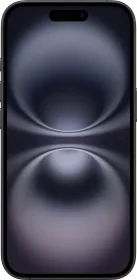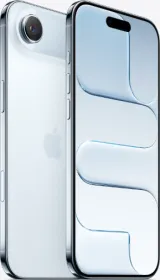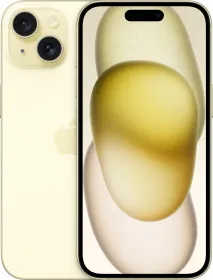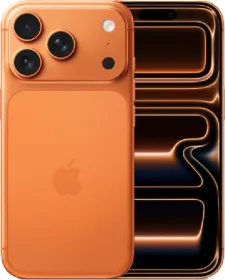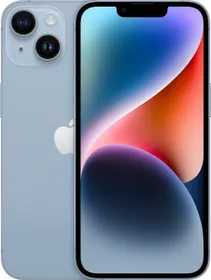iPhone 17 Air Roundup: Table of Contents
As we move closer to the iPhone 17 launch event expected in the first or second week of September, fans and enthusiasts are beginning to talk about the series. Usually, the hype is equal for all the models in a new iPhone model, but this year, it’s the iPhone 17 Air that’s generating the most buzz. And why would it not?
It’s going to be the first iPhone in years that adopts a new design, a new philosophy, in fact, which bends toward form over functionality (a relatively new segment that emerged with the launch of the Galaxy S25 Edge). So, without any further ado, let’s dive right into it. Here’s everything we know about the upcoming iPhone 17 Air.
iPhone 17 Air: Design
As the name suggests (rather indirectly), the iPhone 17 Air will be Apple’s thinnest and lightest iPhone to date. If you’ve already tried the Galaxy S25 Edge and were amazed by how thin it feels (at just 5.8mm), prepare to be surprised once again.
Renowned Apple analyst Min-Chi Kuo believes that the iPhone 17 Air will measure 5.5mm at its thinnest, which is usually the thickness of the chassis, excluding the camera bump. Given below is a table of comparison wherein I’ve mentioned the thickness of the iPhone 16, the iPhone 16 Pro (review), the iPhone 16 Pro Max, and the iPhone 17 Air.
While I’m confident that the iPhone 17 Air could beat the Galaxy S25 Edge in terms of thickness, industry sources differ with their predictions. Nonetheless, the dummy models circulating in the market also corroborate the 5.5mm mark, so that seems more likely than other claims (as of now).
Let’s move on to the other aspects of the iPhone 17 Air’s design. We’ve heard that the slimmest iPhone might use a mix of titanium and aluminum for its frame, and, while doing so, will weigh around 145 grams.
The back panel of the iPhone 17 Air will be more like a Pixel phone, wherein a horizontal camera visor runs through the phone’s width (at the top), and houses a single-camera lens toward the left. I’ve also heard some rumors about Apple using glass around the company’s logo at the back of the phone, but the execution remains to be seen.
Dummy models also suggest that the iPhone 17 Air will feature fewer speaker vents, a USB-C port that’s placed toward the back panel of the phone, retain the Camera Control button from the current iPhone models (although some dummy models don’t have it), and feature the Dynamic Island on the front (with the camera located toward the left, instead of its usual position on the recent iPhone models).
Last but not least, the iPhone 17 Air is said to be available in four colors: black, white, Light Gold, and Light Blue (the company might brand the last two as the “Titanium” shades, like the iPhone 16 Pro models).
Also Read: iPhone 17 Roundup: 24MP Front Camera, A19/A19 Pro Chip, 12GB RAM (On Pro Variants), And More
iPhone 17 Air: Display
Given how thin the iPhone 17 Air’s chassis is, giving it a bigger screen might make the phone susceptible to bending. Hence, the Cupertino giant is reportedly sticking with a 6.6-inch screen for its thinnest iPhone.
If that’s accurate, the smartphone will feature a bigger display than the vanilla iPhone 17, but remain smaller than the top-tier iPhone 17 Pro Max.
What’s interesting is that the handset is rumored to use the same panel as the iPhone 16 Pro models, implying that it might get the ProMotion Display technology (which is Apple’s way of branding an LTPO screen capable of refreshing at up to 120Hz).
While there’s another rumor about the iPhone 17 Air (and the vanilla iPhone 17) getting a 120Hz screen without variable refresh rates (basically without an LTPO panel), that seems unlikely at the moment.
iPhone 17 Air: Processor
This remains one of the most disputed aspects of the upcoming iPhone 17 Air. I’ll tell you what’s going on.
We already know that Apple releases new A-series chipsets with every iPhone; for the iPhone 16 series, it was the A18 and the A18 Pro. Now, as we’re closing in on the iPhone 17 launch, the sources collectively agree on two new chips for the lineup: the A19 and the A19 Pro.
Where they remain divided, however, is the choice of chipsets for the models in the upcoming lineup. While some sources suggest that the iPhone 17 Air could get the A19 chip (similar to the one on the vanilla iPhone 17), others claim that the Air could get a binned version of the A19 Pro chipset (with one less GPU core).
To me, the latter makes more sense, as it would give the iPhone 17 Air an edge over the regular iPhone 17, and could possibly lead to a boost in sales. Either way, you should expect the iPhone 17 to be around 15 to 20% faster than the current iPhone 16 (review), along with improvements in its thermal efficiency.
The Air is also expected to feature 12GB of RAM (a 50% improvement over the current iPhone 16 models), along with a dedicated vapor chamber to maintain optimal temperature for strained performance.
For connectivity, the iPhone 17 Air could feature Apple’s in-house C1 5G modem, along with the company’s first Wi-Fi and Bluetooth chips, which should be more energy-efficient and better-integrated with the hardware.
Also Read: Every Apple Product that the Company Might Launch in 2025
iPhone 17 Air: Operating System

Like the other models in the lineup, the iPhone 17 Air will run on a stable version of Apple’s iOS 26 operating system, with the Liquid Glass design language as its center.
We’ve already published a hands-on review of the iOS 26 public beta. The main highlight of it remains the Liquid Glass design, which consists of translucent layers of visual elements that reflect and refract light like a real-world piece of glass.
While I like the freshness it brings to the user interface, some people are concerned about the impact the transparency could have on the legibility of the on-screen text.
What’s new in iOS 26? Good question.
We have revamped app icons (which now have rounded corners and look brighter and more vibrant than before), a new Clear Look for the home screen (wherein all the icons and widgets adopt a transparent look), new Phone app features like Call Screening and Hold Assist, Live Translation in Apple’s communication apps, improvements to other native apps like Mail, Music, Journal, Apple Maps, and new Games and Preview apps, among other additions.
Also Read: iOS 26 is Official: Check Out 30 New Features
iPhone 17 Air: Cameras
As seen in the iPhone 17 Air renders, the handset is likely to get a single rear-facing camera, a 48MP sensor capable of providing 2x in-sensor zoom (borrowed from the iPhone 16 models). On the front, the smartphone is expected to get an upgraded 24MP camera (whereas the current iPhone 16 models feature a 12MP selfie shooter).
With the increase in resolution, Apple could finally allow zoom on the front camera, as it won’t diminish the quality as much as it would have on a 12MP sensor.
iPhone 17 Air: Battery

This is probably the worst aspect of this iPhone 17 Air roundup. According to a report by The Information, the Air could feature a 2,800 mAh battery (similar to the iPhone 12, with support for MagSafe charging). Now, if you look at it in isolation, the battery capacity might make you scratch your head.
However, Apple is taking the necessary measures to extract the most from the battery. For instance, the Air could use a high-density silicon-anode battery, paired with Apple’s most energy-efficient connectivity chips (C1 modem and the Wi-Fi and Bluetooth chips), and a more efficient A19 (or A19 Pro) chip.
Even so, I don’t expect heavy users (like me) to go through a day of regular usage without charging the iPhone 17 Air by evening or night. (Surprise me, Apple!)
Also Read: iPhone 17 Nears Production As Apple Reportedly Completes Engineering Validation Testing (EVT)
iPhone 17 Air: Conclusion
From what it sounds like, the iPhone 17 Air will compete directly with the Galaxy S25 Edge, perhaps offering better performance. But given the dual-camera setup on the latter, and the noticeably larger battery, I am inclined to say that the iPhone 17 Air might not be the perfect “slimmest iPhone,” but surely a significant step in the direction of slimmer flagships.
A lot depends on the phone’s pricing as well, with current rumors suggesting a positioning between the regular iPhone 17 and the iPhone 17 Pro (similar to the outgoing iPhone 16 Plus). It remains to be seen how the new tariffs impact the upcoming iPhones’ pricing, though.
You can follow Smartprix on Twitter, Facebook, Instagram, and Google News. Visit smartprix.com for the latest tech and auto news, reviews, and guides.
Note: This post may contain affiliate links. We may earn a small commission at no extra cost to you.
















